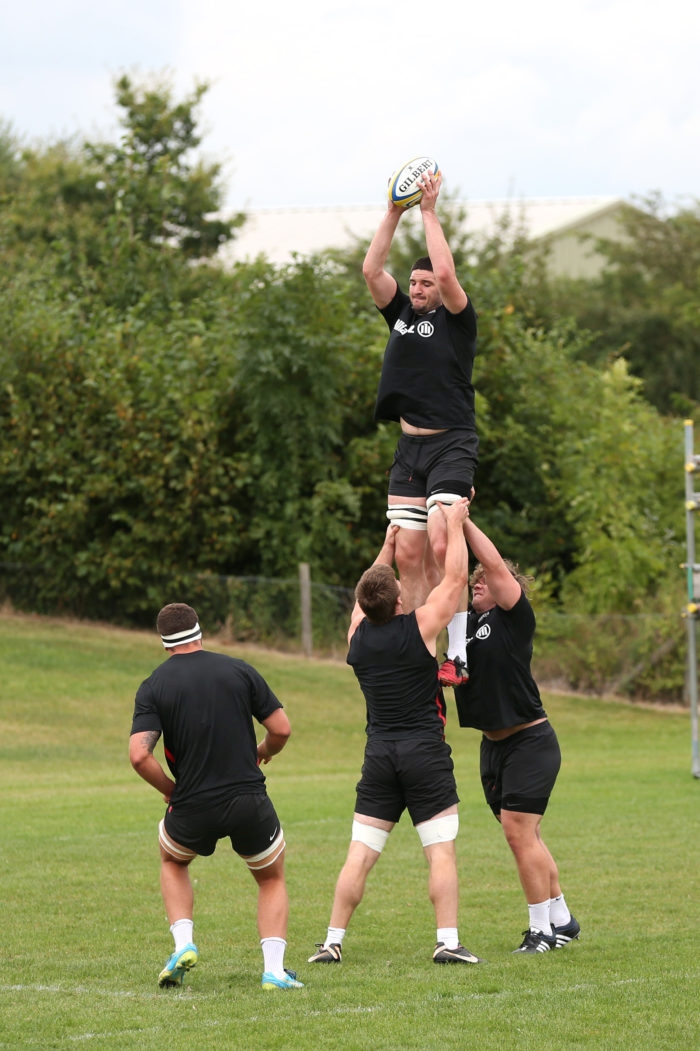Top tips for coaching a lineout session
Scrums & Lineoutsby Dan Cottrell

With an average of 25 lineouts in each game at the top level, you can understand why most teams target to win at least 90% of their own throws, as well as work so hard to spoil their opponent's possession. The key is precision.
On the face of it, the lineout should be simple. And yet so many teams, including international sides, struggle to win clean lineout ball. Which is why most teams spend anything between 10% and 25% of their training time on trying to perfect their lineouts.
The closed session - repeat, perfect
Closed lineout training sessions are especially good for working on timing and movement – the two things that really make the lineout function. During these rugby coaching sessions, you will quickly pick up on areas that need improvement.
In a closed session the same rugby drill or play is practised repeatedly and unopposed until everyone can perform their roles flawlessly. No pressure is put on the players and they are encouraged to try things and learn from their mistakes. For example, the number 8 running a front peel might try different angles of running to see which work best for him and the team.
Closed training session checklist:
- Work on movement and timing.
- Correct individual technique immediately.
- Don't put pressure on your players.
- Let your players experiment to find out what works and what doesn't.
- Repeat the lineout until it works smoothly and flawlessly.
The open session - oppose, compete
An open session takes the lineout skills perfected in the closed session and moves them into a more game-oriented coaching session, to test the players' reaction to pressure. You want to put your players under as much pressure as possible to see how well their rugby skills hold up.
Try to make all lineouts fully opposed. If that's not possible, use a single pod (two lifters and a jumper) to oppose one of your attacking lineouts. You could take this to the extreme and allow the defending team to "cheat", as some players might in a game. For instance, by destabilising lifters, jumping across the line, coming offside to stop the drive, jumping early, but make sure all players are aware of the safety implications of lineout interference.
Creating a pressured, game-like environment
You must pressure your attacking lineout to achieve a 100% success rate. Try all your lineout options and make changes if certain lineouts don't work as you'd like.
Make your players move around the pitch between each lineout to simulate game situations and to tire them out. Emphasise the importance of getting to the lineout quickly, getting set promptly and making sure the call is understood by everyone.
Adapt your lineout plays
Ask questions of your decision-makers to focus and modify their thought processes. For example, you might want to find out why your hooker called a certain lineout in a certain part of the pitch. Or what your captain wants to achieve from a specific lineout.
Open coaching session checklist:
- Put your players under game-like pressure by encouraging active opposition.
- Insist on 100% accuracy.
- Tire out your players between lineouts.
- Practise lineouts around the pitch.
- Ensure your players get to each lineout and get set early.
- Question decisions at lineouts.
- Don't be afraid to make changes if it isn't working.
Newsletter Sign Up
Coaches Testimonials

Gerald Kearney, Downtown Las Vegas Soccer Club

Paul Butler, Florida, USA

Rick Shields, Springboro, USA

Tony Green, Pierrefonds Titans, Quebec, Canada
Subscribe Today
Be a more effective, more successful rugby coach
In a recent survey 89% of subscribers said Rugby Coach Weekly makes them more confident, 91% said Rugby Coach Weekly makes them a more effective coach and 93% said Rugby Coach Weekly makes them more inspired.
Get Weekly Inspiration
All the latest techniques and approaches
Rugby Coach Weekly offers proven and easy to use rugby drills, coaching sessions, practice plans, small-sided games, warm-ups, training tips and advice.
We've been at the cutting edge of rugby coaching since we launched in 2005, creating resources for the grassroots youth coach, following best practice from around the world and insights from the professional game.













